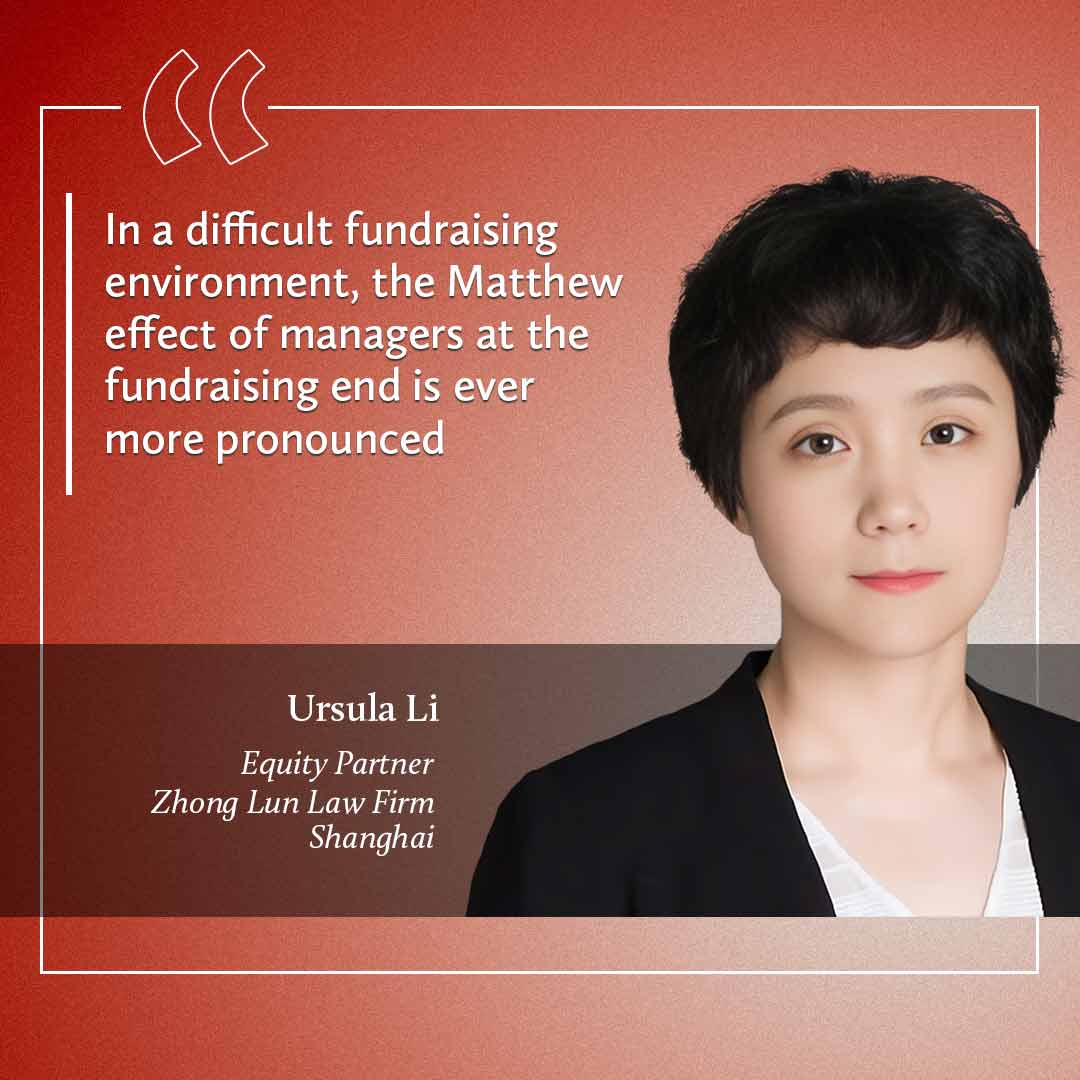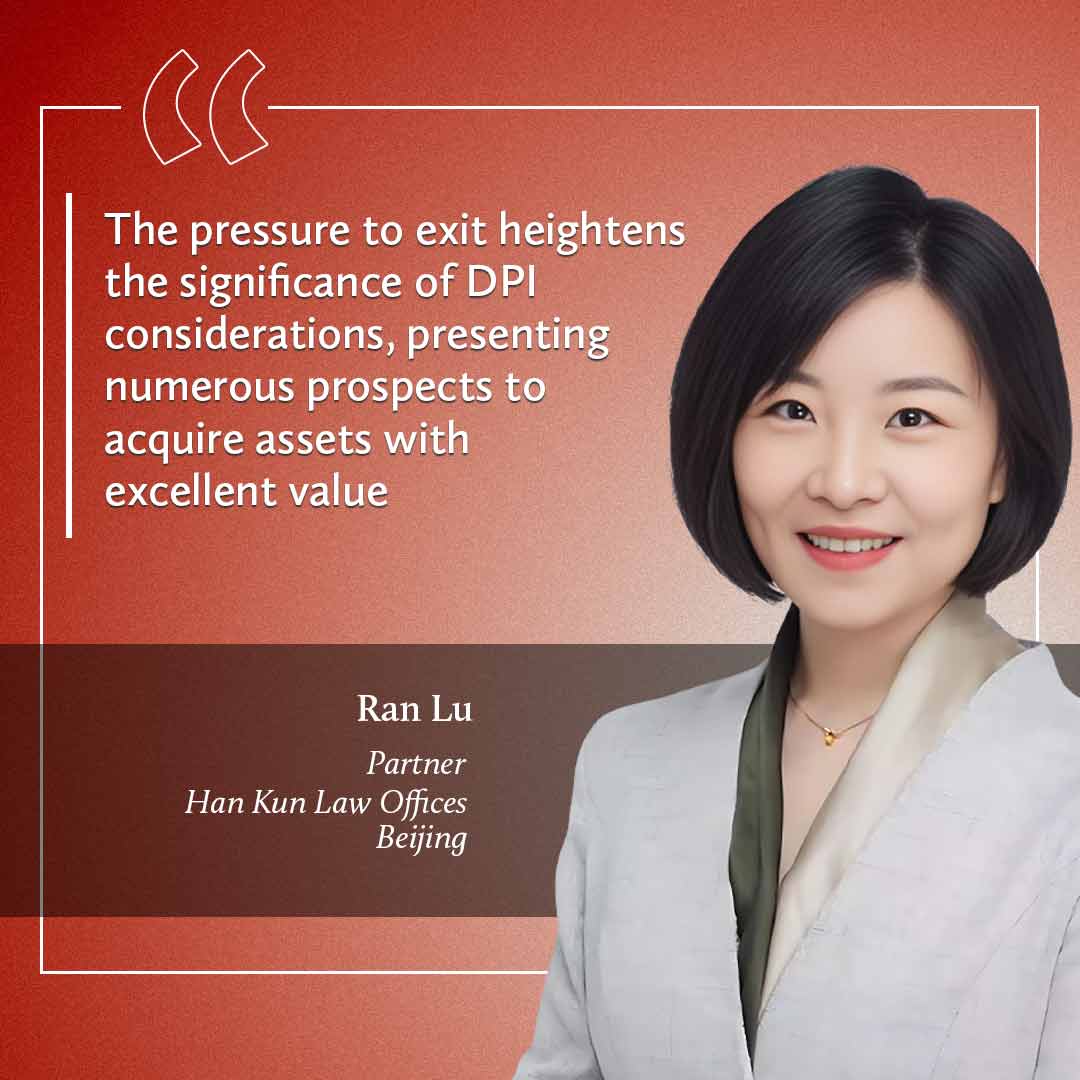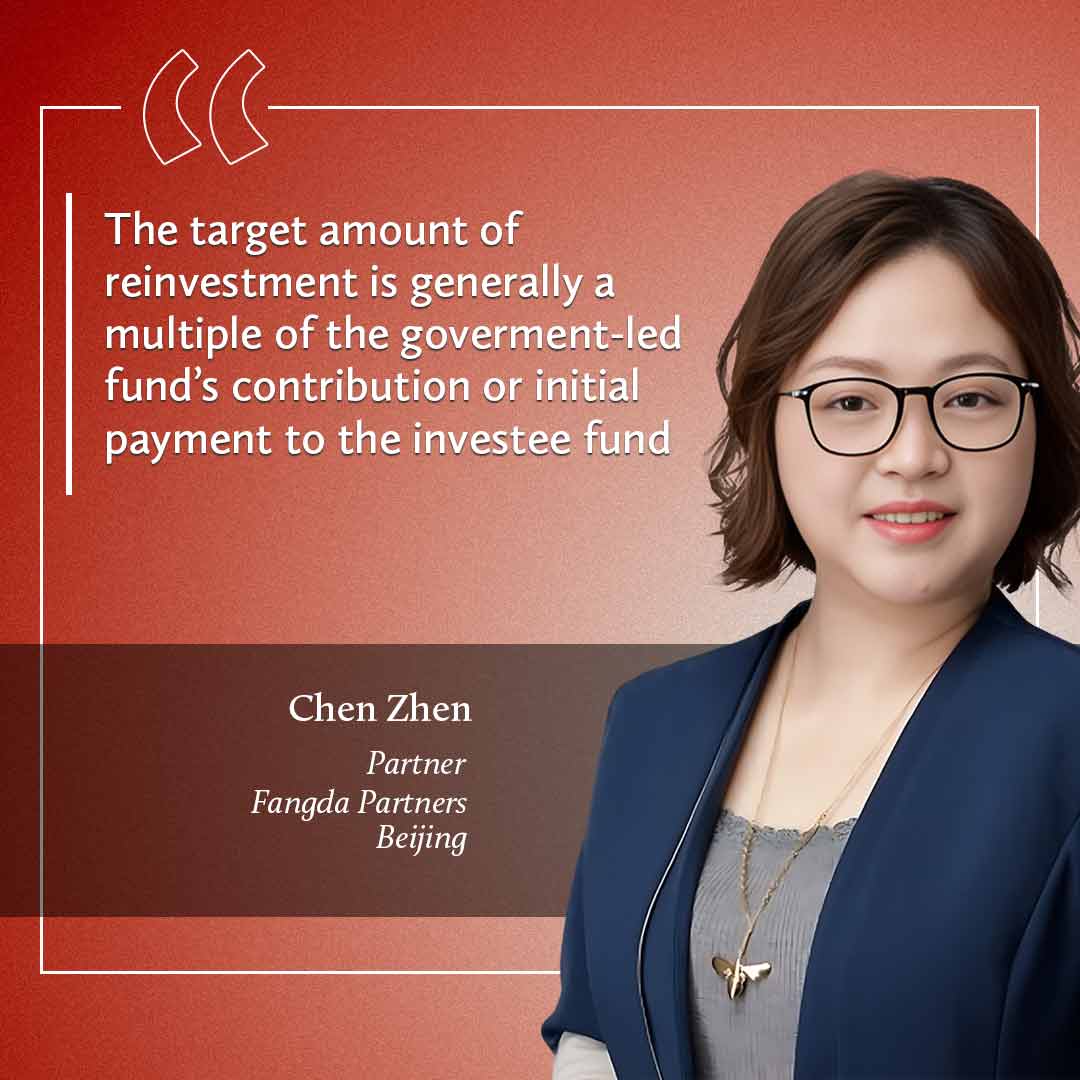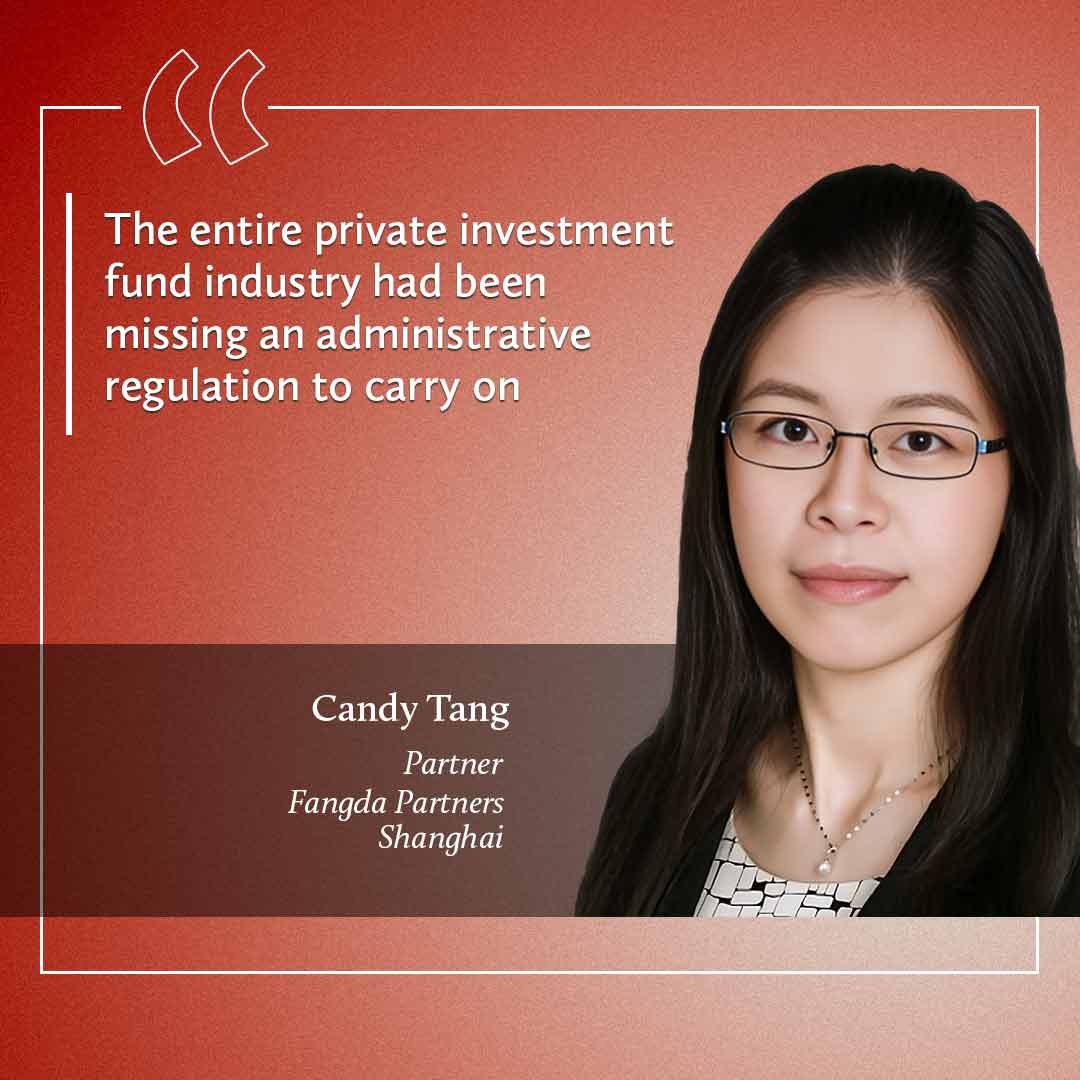Bleak prospects have dealt a challenging hand of enhanced regulation to players in China’s private equity market, adding a wildcard of China/US decoupling and giving the industry a thorough shuffle. But with or without foreign funds, the game must go on. Luna Jin reports
Texas hold ’em has been dethroned as the most coveted social sport among China’s finance elites, making way for Guandan, an enthralling poker game originating in Jiangsu province. This is now the game of choice for networking with local officials and private entrepreneurs.
A similar transition is evident in the private equity (PE) sphere. A decreased presence of US dollar funds in the Chinese market over the past two years has opened seats at the table for deep-pocketed investors of state-owned backgrounds and government guided funds.
Recognising the distinct investment styles and cultural DNA of these two types of new players, practitioners and service providers are quickly recalibrating their strategies to embrace a new set of game rules.
The present trend line behind the ebbs and flows shows the country’s PE industry in a downward cycle characterised by declining fundraising, investments, transaction volumes and value.
According to VC/PE service provider Zero2IPO, there were 6,510 cases of investment in China’s PE market in the first three quarters of 2023; the disclosed investment amount was RMB507.09 billion (USD71.5 billion). These numbers represent a year-on-year decline of 25.9% and 31.8%, respectively.
At the same time, the domestic regulatory environment is undergoing a process of standardisation. The long-awaited top-level regulatory framework for the industry has finally materialised.
In a historic move, Premier Li Qiang signed a State Council decree in July 2023, introducing the Regulations on the Supervision and Administration of Private Investment Funds. Taking effect on 1 September, this groundbreaking regulation marks China’s maiden foray into overseeing the PE industry on the administrative level, propelling regulatory measures to an elevated realm.
Stacked challenges
The industry faces formidable challenges and a multitude of changes.
- In the past two years, the US Federal Reserve and other central banks have raised interest rates many times.
- Developed economies have persistently imposed restrictions on investments in China, forcing international capital to redeploy its flow of funds.
- In response, China has fortified regulations governing outbound investment, cross-border transactions and the flow of data, enacting laws and regulations in areas such as data protection, cybersecurity and counter-espionage.


Under such a trend, the direction and focus of legal services have quietly changed. Darren Liang, a partner at Shihui Partners’ Shanghai office, notes that “private equity legal services are no longer homogenised and standardised, but vary from industry to industry, with clear characteristics”.
Despite tightening regulations across multiple fronts, China continues to uphold its commitment of economic opening-up and globalisation. An influx of qualified foreign limited partner (QFLP) funds to the country and a surge of qualified domestic limited partner (QDLP) funds flowing from China to overseas markets bear witness to the robust development of the industry in recent years. International private equity managers play a significant role in these endeavours.
China’s private equity industry is on a trajectory of rapid growth amid a backdrop of uncertainty. As the market matures, it will embrace a proactive mindset in seeking innovation and change. This will define today’s primary market as it prepares to engage in more intricate forms of transactions.
Subdued fundraising, a winter of exits
The year 2023 cast an ominous shadow on the world of investment, as fundraising and exits struggled over treacherous terrain.
On the fundraising front, there was a confluence of factors including the global interest rate hike, intensified by the US-China decoupling, and the country’s below-expectation economic recovery.
This dampened the willingness of overseas limited partners (LPs), especially those in Europe and the US, to contribute to domestic general partners (GPs). Purely financial LPs, in particular, became increasingly demanding in terms of internal rate of return (IRR) and distribution to paid-in capital (DPI).
With limited funds at their disposal, LPs are more willing to give their money to large GPs with whom they have existing good relationships, and who have a good track record. “In a difficult fundraising environment, the Matthew effect of managers at the fundraising end is ever more pronounced,” says Ursula Li, an equity partner at Zhong Lun Law Firm’s Shanghai office, referring to the trend of established fund sponsors becoming even more successful in fundraising.


Ran Lu, a partner in the Beijing office of Han Kun Law Firm, notes the fundraising period for private equity funds has lengthened in the past few years. It is now more common for first closures to be completed in six to 12 months, and final closures in 18 to 24 months.
“In order to adapt to LPs’ current fundraising requirements, fundraising structures have become more complex,” says Ran. “Renminbi funds mostly adopt parallel structures, multi-parallel structures, linkage structures, umbrella structures, and combinations of the previous structures.”
Since 2021, there has been a significant decline in new fundraising activities within China’s equity investment market. According to the Asset Management Association of China (AMAC), newly filed private equity and venture capital funds stood at RMB446.6 billion by the end of 2022, reflecting a year-on-year decline of 34.67%.
In the first quarter of 2023, newly filed funds amounted to RMB137.6 billion, marking a year-on-year decline of 15.82%.
In August 2023, US President Joe Biden signed an executive order requiring US companies to disclose their investments in China in high-tech areas such as artificial intelligence (AI). The order prohibits venture capital and private equity firms from pouring more money into China’s efforts to develop semiconductors and other microelectronics, quantum computers and certain AI applications.
“Foreign investors, in addition to becoming more cautious, have grown conservative in their approach to investing in China,” says David Yu, a Shanghai and Hong Kong-based founding partner at Llinks Law Offices. “Investors who allocate assets globally have tended to reduce or even halt their investments in the country.”
Adding to the upheaval, in June 2023, Silicon Valley venture capital titan Sequoia announced its decision to spin off its China business into an independent entity. The move came as a seismic jolt, considering Sequoia’s investments had propelled the rise of almost every Chinese internet giant, and the top-tier institution had reaped substantial rewards from its investments in the country.
Yu explains that waning interactions between Sequoia’s Chinese and overseas operations, coupled with the divergent investment needs of LPs in different regions, made a combined approach more detrimental than advantageous.
“Under the trend of de-globalisation, more large-scale funds may follow Sequoia’s lead and bifurcate their local operations into independent entities,” he says.
On the exit front, the pace of IPOs witnessed a significant slowdown as the CRSC launched a series of initiatives in the latter half of 2023, imposing higher quality standards upon listed companies.


The capital market’s downturn naturally reverberated into the primary market, driving down project valuations. Consequently, the number of PE/VC-backed IPOs and the raised funds plummeted year-on-year in 2023.
IPOs have always served as the most lucrative exit method for PE/VC institutions, and the preferred avenue for high-quality portfolio companies. However, Ran, of Han Kun, says that amidst the challenges opportunities still abound for bottoming out. “The pressure to exit heightens the significance of DPI considerations, presenting numerous prospects to acquire assets with excellent value,” she says. “Now is a good opportunity to invest, but also a good time for mergers and acquisitions.”
The difficulty of exits has likewise shifted the focus of legal services. Liang, of Shihui, notes that while legal services historically home in on the investment stage, investment funds now exhibit a growing demand for exit-related services.
He identifies three broad opportunities:
- Institutions require assistance in selling equity to other investors through mergers and acquisitions or equity transfers before listing.
- Even after listing, institutions face hurdles in exiting. This necessitates the sale of shares to industrial investors through overall agreement transfers while complying with capital market regulations.
- When funds reach maturity and companies struggle to exit, institutions find themselves negotiating repurchase and exit agreements or enforcing such clauses through dispute resolution mechanisms.
Situations where buyback clauses are triggered have jumped from about 9% in the past to more than 50% now, says Liang. “At the drafting stage of the agreement, it is important to anticipate the subsequent inability to enforce the repurchase clause, so as to optimise the clause and enhance its enforceability under Chinese law,” he says.
Rise of renminbi funds
In recent years, local governments have been pouring investment into the market, aiming to harness social capital and fuel businesses in specific sectors or geographic areas, or to drive the development of particular industries.
The magnitude of this trend becomes evident in the latest data from Zero2IPO: More than 90% of funds raised in the first three quarters of 2023 were in renminbi, with state-owned capital, government-guided funds and other state-backed managers actively driving the market forward. “Many of the impactful deals have been led by renminbi funds,” says Liang.


However, the blossoming of government-guided industrial funds across the country does not mean easy money for GPs. Chen Zhen, a Beijing-based partner at Fangda Partners, says that while the entry of government-led funds has injected new capital into the private equity industry and activated the market to some extent, it has also raised the bar for investment institutions.
As an example, she says an eligible manager must maintain a spotless compliance record, possess integrity, demonstrate exceptional historical performance, and have a stable investment and management team. In contrast to private investors, government-led funds often impose specific demands for integration of compliance and commercial considerations – reinvestment and exit rights, in particular.
“Government-led funds may require the investee fund, its manager and their respective affiliates to reinvest in a specific industry or geographic region,” says Chen. “The target amount of reinvestment is generally a multiple of the government-led fund’s contribution or initial payment to the investee fund.”
She says these funds also “implement phased assessment of returns, and establish corresponding incentives and penalties for managers”.
Compared with US dollar funds, which typically invest in early-stage, seed-stage and nascent business models, renminbi private equity demands a shorter investment-to-exit period and greater certainty, and therefore pays more attention to the potential of future IPOs of the investee companies during the investment bidding stage.
“When renminbi funds invest, they consider both the maturity and financial performance of the project itself, as well as its potential for synergising with the local industry,” says Liang, of Shihui. “This means that the target companies of renminbi funds are not typically at an early stage or immature stage.”
Liang says that in renminbi funds backed by state-owned entities, investment teams and legal and risk control teams operate independently and have segregated reporting lines and working conditions.
“They meticulously evaluate investment transactions throughout the process to ensure compliance standards are met,” he says. “Rather than placing the highest priority on the realisation of the business purposes, these funds strive to strike a balance between achieving business objectives and meeting compliance requirements.
“Compared to US dollar funds, the compliance department of renminbi funds plays a relatively more important and vocal role within the organisation. It acts as a gatekeeper, maintaining operational standards of risk control and compliance above and beyond what is required, rather than compromising compliance standards for commercial purposes.”
Heightened regulation
Valued at a RMB21 trillion, China’s private equity industry has long grappled with the absence of comprehensive regulatory laws. However, in July, a ray of hope emerged with the introduction of the Regulations on Supervision and Administration of Private Investment Funds.
In the past, “the entire private investment fund industry had been missing an administrative regulation to carry on,” says Candy Tang, a partner at Fangda Partners in Shanghai.


Existing laws and regulations had limitations and lacked comprehensive oversight. The Securities Fund Investment Law, passed in 2003 and amended several times, has limited descriptions for the regulation of private securities funds.
The Interim Measures for the Supervision and Administration of Private Investment Funds, published by the CSRC in 2014, are confined to the document’s low hierarchy, resulting in limited supervision and penalties.
As for the Guiding Opinions on Regulating the Asset Management Business of Financial Institutions, jointly promulgated by several departments in 2018, the extent to which it applies to the private equity industry has always been controversial.
In terms of content, most parts of the new regulations are not new requirements “but a re-statement of some of the sectoral regulations and self-regulatory rules of the private equity industry in the past, as well as an elevation of the regulatory hierarchy and supervision,” says Tang.
Because the regulations clarify penalties and raise the cost of offences, Ran, of Han Kun, says they are expected to have a significant impact on “those seeking short-term speculative gains rather than [making a] long-term commitment to the private investment fund industry”.
This aligns with the fundamental policy of “fostering excellence and limiting inferiority” that the CDFA has been upholding, and will effectively raise the entry threshold for managers.
Liang, of Shihui, says: “The regulations will gradually eliminate poorly qualified market participants who have caused significant losses to investors in the past. Simultaneously, funds adhering to higher standards will gain a competitive advantage in fundraising and become more active in the market.”
He says the regulations are a collection of important provisions that summarise the practical experience of eight to nine years of history, and will promote the development of the industry in many ways. Notably, they set up a special chapter on venture capital funds, encouraging VC funds to invest in early, small and technology-based enterprises, “clarifying the future development direction for China’s private equity funds and the industry”.
Additionally, the regulations offer exemption rules concerning nested investment tiers to accommodate the needs of government investment funds, venture capital funds, and mother funds seeking to diversify their operations.
It is important to note that the publication of the regulations does not mark an end to regulatory rule-making. The CSRC and the AMAC, as the main industry regulators of the private equity market, have been continually refining supervision, promulgating relevant regulations and promoting standardised industry operation.
Tang, of Fangda, highlights their efforts to address emerging issues alongside industry development, such as fund filing obligations evasion, establishment of different investment units within the same fund, bail-out payment structures, engagement in disguised money lending, and syndicated operation of administrators.
In December 2020, the CSRC promulgated the Several Provisions on Strengthening the Supervision of Private Equity Investment Funds. These provisions outline consequences for private equity fund managers who unlawfully employ fund assets for non-private equity investments such as borrowing, lending, guarantees, explicit shares and real debts.
The relevant private equity funds are restricted from adding new investments of this nature, raising additional funds, attracting new investors, extending maturity, and must be liquidated upon maturity.


Following the introduction of the Measures for the Registration and Filing of Private Investment Funds in February 2023, the AMAC published three registration guidelines for private fund managers and three filing guidelines for private investment funds. These efforts continually enhance and refine regulatory requirements.
Tang says the AMAC is actively working on further registration and filing guidelines, potentially addressing issues like “syndicated operation of administrators” and updating the format and content requirements for legal opinions on the registration of private equity fund managers.
Regarding specific investments, compliance extends beyond private equity regulations, encompassing the regulatory requirements of invested industries, particularly those subjected to stringent oversight.
Liang sees a growing demand for multidimensional compliance services for private equity clients, extending beyond traditional offerings. For instance, with pharmaceutical industry investments legal service providers must be able to also navigate compliance requirements for research, clinical trials and sales, while for investments into the semiconductor sector law firms must be well versed in rules surrounding international sanctions.
OPPORTUNITIES IN SECONDARY MARKETS
Accompanied by a gradual depletion of domestic stock of funds and a surging demand for fund exits, secondary private equity transactions have garnered increasing favour among investors alongside IPOs, M&A and buybacks.
In the realm of private equity, a secondary fund (S fund) stands as a distinctive fund product that achieves investment returns by acquiring fund shares and portfolios held by investors.
Catherine Chen, a Shanghai-based equity partner at Zhong Lun Law Firm, says S funds are fertile ground for rapid development in China, given the substantial stock of renminbi funds.
“Local governments and market-oriented institutions are expediting the establishment of S funds, and S share transfer platforms have already been established in Beijing and Shanghai,” she says.
In December 2020, with the approval of the China Securities Regulatory Commission, Beijing Equity Exchange took the lead in piloting the transfer of equity investment and venture capital shares. By the end of August 2023, the Beijing Equity Exchange had successfully completed 42 transactions involving fund share pledge registration.
However, lawyers interviewed agree that China’s S market is still in its infancy. Compared to the more than 30-year history of S transactions in the US, China’s market is relatively nascent.
While the current growth of the domestic S deal market is primarily driven by exit demands from limited partners (LPs), Candy Tang, a partner at Fangda Partners in Shanghai, has observed the emergence of more complex fund restructuring-type S deals led by fund sponsors.
“These types of S transactions involve greater involvement from the fund sponsor compared to a simple transfer of fund interests, allowing the buyer to access more information and wield greater bargaining power,” she says.
Considering the immense potential of China’s private equity secondary market, “it is foreseeable that fund sponsor-led S deals will become a prevalent trend in the future,” says Tang.
When it comes to transaction specifics, Chen highlights the challenges in S transactions, such as transaction and valuation pricing, and suggests parties should pay attention to “whether there are nesting and other prohibited circumstances in the structure, special requirements for transactions of state-owned assets, and potential lock-up periods for S shares”.
On the transferee’s side, Tang suggests that key areas of focus include:
- The transferor’s subscribed and paid-in capital status
- Defaulting
- Encumbrances on the interests in the fund, including pledges
- Pre-emptive rights to the proposed transfer of interests
- The transferor’s ability to cooperate as an interest holder in the integrity of the interests before the completion of the industrial and commercial change associated with the transfer of interests.
On the other side, Tang advises the transferor to pay attention to the treatment of gains, if applicable, before and after the transfer settlement date and any ongoing obligations following the withdrawal of the transfer.




